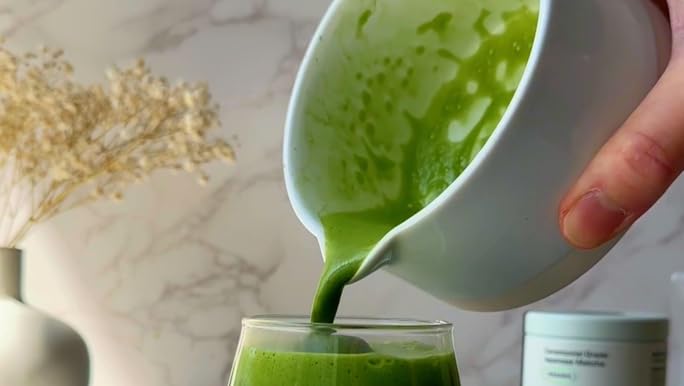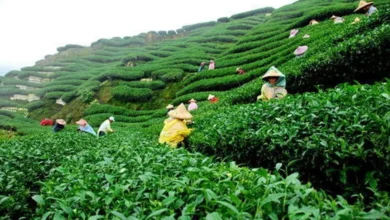How Intercropping Boosted My Organic Matcha Yield: A Farmer’s Story

Introduction
When I first started organic matcha farming in Assam, I had no idea how much intercropping would change my results. Like many small farmers, I thought growing just tea plants was the best use of my land. But after a couple of years of experimenting, I learned that smart intercropping not only increased my matcha yield but also improved soil health and gave me extra income.
In this article, I’ll share my real-life experience with intercropping in my organic matcha farm. I’ll explain what worked, what didn’t, and how you can apply these techniques. Whether you’re just starting out or looking to improve your existing setup, this story may give you practical ideas.
What is Intercropping?
Intercropping means growing two or more crops together in the same space. The goal is to make better use of sunlight, water, and nutrients — and avoid pests and weeds naturally.
There are several types:
- Row Intercropping: Planting crops in alternate rows
- Mixed Intercropping: Growing different crops together randomly
- Strip Intercropping: Growing in wide rows or strips
- Relay Intercropping: Planting a second crop before the first one is harvested
Why I Decided to Try Intercropping
In the early days of my farm, I faced these issues:
- Weeds growing rapidly between tea rows
- Soil fertility going down
- Pests attacking the leaves
- Low earnings during the non-harvest season
After learning from a fellow organic farmer and reading about Japanese tea garden practices, I decided to test intercropping with shade-friendly, low-height plants.
What Crops I Used for Intercropping
Here are the main crops I intercropped with my organic matcha:
1. Tulsi (Holy Basil)
- Natural pest repellent
- Grows well in partial shade
- Can be dried and sold as herbal tea
2. Marigold
- Attracts pollinators
- Controls nematodes in the soil
- Adds color and biodiversity to the farm
3. Ginger
- Grows underground, so doesn’t compete for light
- Has good market value
- Improves soil texture
4. Turmeric
- Helps suppress weeds
- Can be used for natural dyes and ayurvedic products
5. Green Gram (Moong Dal)
- Nitrogen fixer (improves soil fertility)
- Short cycle crop
- Adds protein to family diet or local sales
Table: Intercropping Benefits I Observed
| Crop | Benefit to Matcha Farming | Market Use |
|---|---|---|
| Tulsi | Pest control, mild shade | Herbal tea, ayurveda |
| Marigold | Pollinators, nematode control | Flower markets, temples |
| Ginger | Soil improvement, space-efficient | Kitchen spice, wholesale |
| Turmeric | Weed suppression, soil health | Powder, natural dye |
| Green Gram | Soil nitrogen, fast harvest | Pulses market |
Results After One Year
After one year of planned intercropping, here’s what I observed:
- Matcha Yield Increase: ~20% boost due to better soil and fewer pests
- Lower Pesticide Use: No chemical spray, even organic neem oil use reduced
- Extra Income: From tulsi, ginger, and marigold – around Rs. 25,000 from 0.5 acre
- Healthier Soil: Earthworms increased, less topsoil erosion
This also reduced my dependency on external composts. Some leaf matter from these intercrops went right back into the soil.
Mistakes I Made (And You Should Avoid)
Overcrowding
Too many intercrops in one area can reduce airflow and spread disease. Keep spacing generous.
Ignoring Crop Cycles
Ginger and turmeric take months to mature. Avoid planting long-term crops near harvesting lanes.
Not Testing Soil First
Some parts of my land didn’t support green gram well. Always do a basic soil test.
How to Start Intercropping in Your Matcha Garden
- Start Small – Test one row or patch.
- Pick Complementary Crops – Choose plants that don’t compete heavily.
- Observe Weekly – Track pest activity, growth, and shade.
- Mulch and Compost – Use intercrop waste to feed your soil.
- Rotate – Change intercrops every 1–2 seasons to avoid buildup.
Related Articles
If you’re interested in improving your matcha business, check out these articles:
- How I Started My Organic Matcha Business in India
- The Complete Guide to Matcha Farming in India
- Top Organic Fertilizers for Matcha Tea Plants
- Shade-Growing Techniques for Premium Matcha Quality
FAQ Section
Q1: Can intercropping work in small tea farms?
Yes! Even half an acre can support intercropping if managed well.
Q2: Do these intercrops affect the taste of matcha?
No. As long as processing is clean, intercropping does not affect taste.
Q3: Is organic certification affected by intercropping?
Not at all. In fact, intercropping helps meet organic standards by reducing chemical inputs.
Q4: What is the best season to intercrop tulsi with matcha?
Late spring and early monsoon work best in most Indian states.
Conclusion: A More Resilient Organic Farm
Intercropping has made my matcha farm more productive, sustainable, and profitable. It brings biodiversity, reduces chemical use, and creates a mini-ecosystem that supports long-term soil health.
If you’re farming organically, I highly recommend giving intercropping a try. Even with small steps, you can see big changes over time.
“Nature rewards diversity. So should we.”




